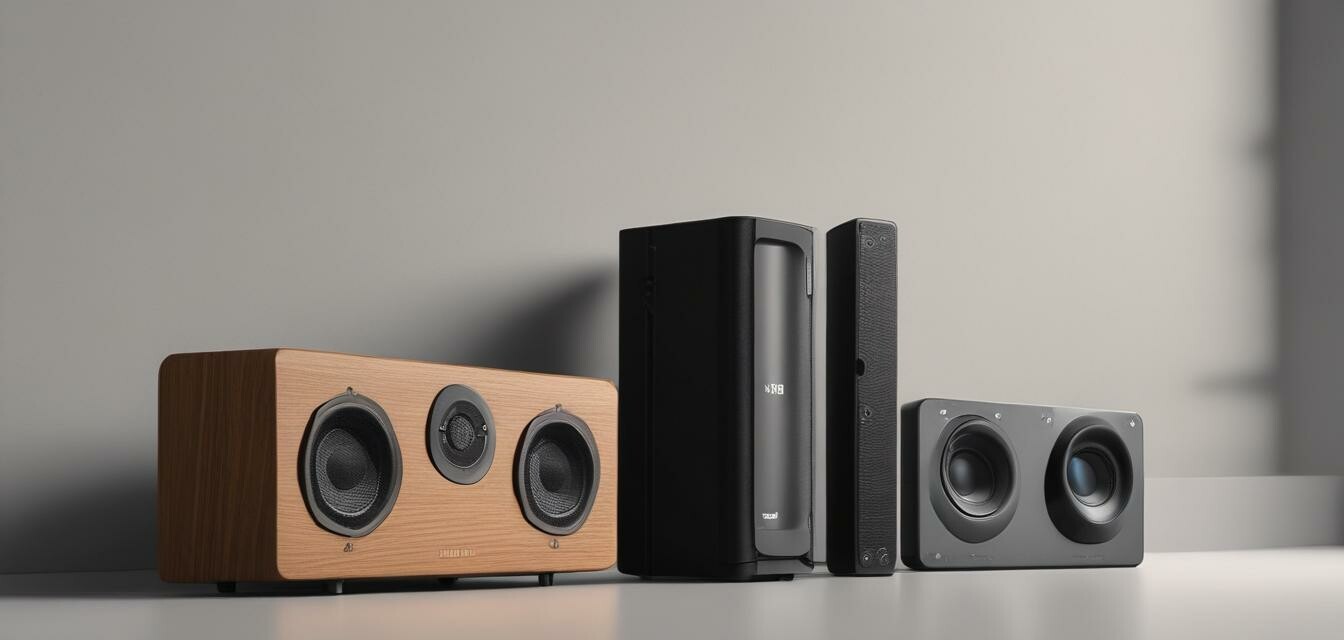
Compact Soundbars vs. Traditional Ones: Who Wins?
- Compact soundbars offer space-saving solutions without sacrificing sound quality.
- Traditional soundbars generally provide a richer audio experience due to their larger size and components.
- Choice between the two depends on individual preferences for sound quality and home setup.
- Consider the room size and audio needs before making a decision.
When it comes to enhancing your home audio experience, soundbars have become a popular choice. Among the variety available, two prominent categories stand out: compact soundbars and traditional soundbars. Each has its unique advantages and drawbacks that cater to different needs and preferences. In this article, we will delve into a detailed comparison of these two types, focusing on sound quality, convenience, and overall user satisfaction.
Understanding soundbars
Soundbars are elongated speaker systems designed to project audio from a wide range of scenarios, offering better clarity and depth compared to traditional TV speakers. They come in various sizes, with compact soundbars being notably slimmer and easier to integrate into more minimalist setups. On the other hand, traditional soundbars tend to be larger, enabling them to pack advanced audio technology for a fuller sound experience.
Comparison of compact vs. traditional soundbars
| Feature | Compact Soundbars | Traditional Soundbars |
|---|---|---|
| Size | Smaller, space-efficient design. | Larger, requires more space. |
| Sound Quality | Decent audio quality, optimized for smaller spaces. | Superior sound performance with deeper bass. |
| Installation | Easier setup, often wireless options available. | More complicated installation may be required. |
| Price | Generally more affordable. | Can be more expensive due to advanced technology. |
| Portability | Highly portable, easy to move. | Less portable, bulky design. |
Pros and cons of compact and traditional soundbars
Pros of compact soundbars
- Space-saving design
- Easier to integrate into any home decor
- More affordable and budget-friendly
- Ideal for small rooms or apartments
Cons of compact soundbars
- May lack the rich sound depth of larger models
- Limited features
- Not suitable for larger spaces
Pros of traditional soundbars
- Outstanding sound quality and depth
- Better for larger rooms
- More features and settings
Cons of traditional soundbars
- Bulky and less portable
- More expensive
- Installation can be complex
Convenience factors to consider
When deciding between compact and traditional soundbars, there are several convenience factors to acknowledge:
- **Room Size:** Assess your space. Compact soundbars suit smaller areas, while traditional ones thrive in larger rooms.
- **Usage Scenarios:** Think about how you plan to use your soundbar. For movie nights or gaming sessions, traditional soundbars may enhance your experience.
- **Aesthetic Fit:** Compact soundbars blend seamlessly into modern home decor, while traditional soundbars may stand out more.
- **Budget Constraints:** Make sure to choose a soundbar that aligns with your financial capabilities without compromising too much on quality.
Choosing the right soundbar for you
Your selection should be based on your needs, preferences, and living conditions. If you are short on space but want to improve your audio experience, a compact soundbar might be the ideal choice. However, if sound quality is your top priority and space is not an issue, then investing in a traditional soundbar could provide an impactful auditory experience.
Where to find the best soundbars
You can explore various budget soundbars, compact soundbars, and high-end soundbars on our website. Each category offers products that cater to different preferences and budgets so you can find the perfect soundbar for your home.
Stay updated with soundbar trends
The soundbar market is consistently evolving with new innovations and technology advancements. To keep up with the latest trends and models, explore our News and Trends section.
Choosing the right soundbar, whether compact or traditional, ultimately depends on understanding your listening environment and preferences. Both styles offer unique benefits that can enhance your audio experience, so assess your needs and make your decision accordingly.